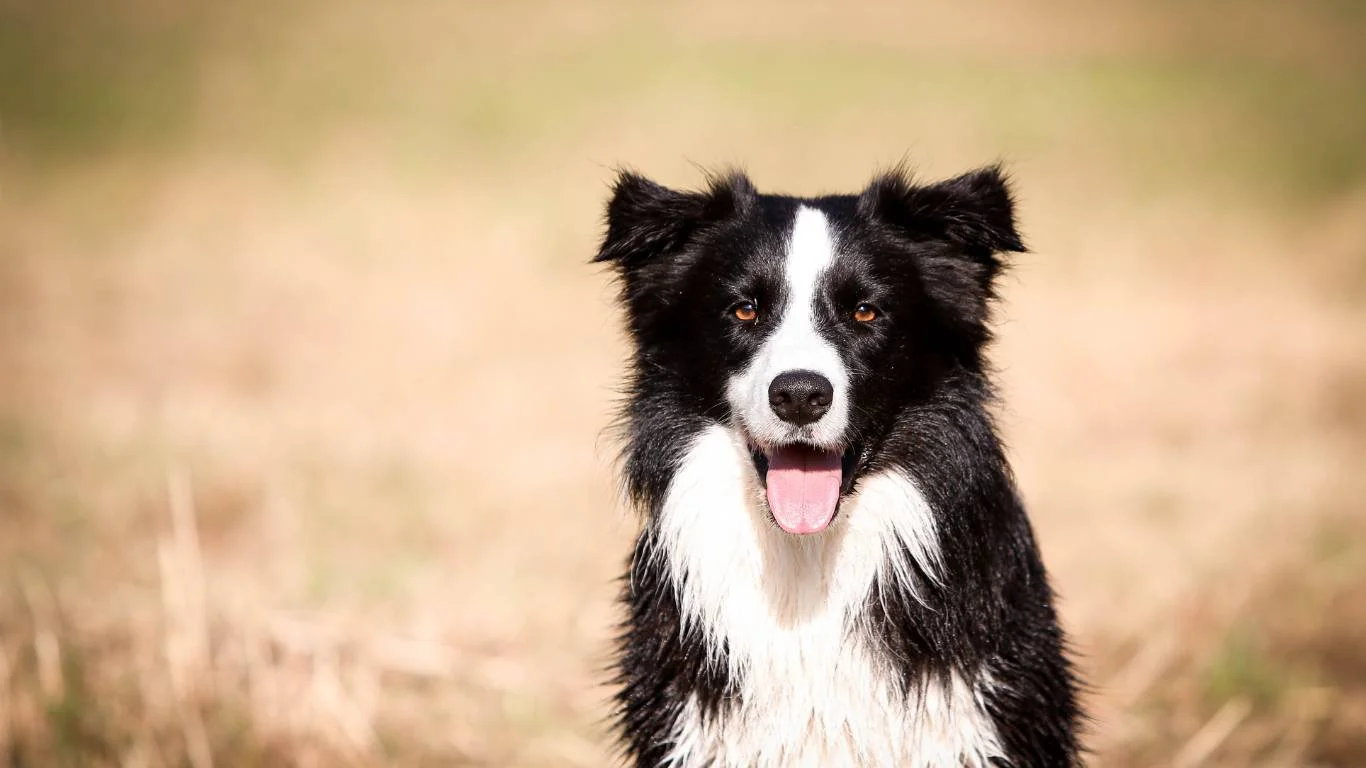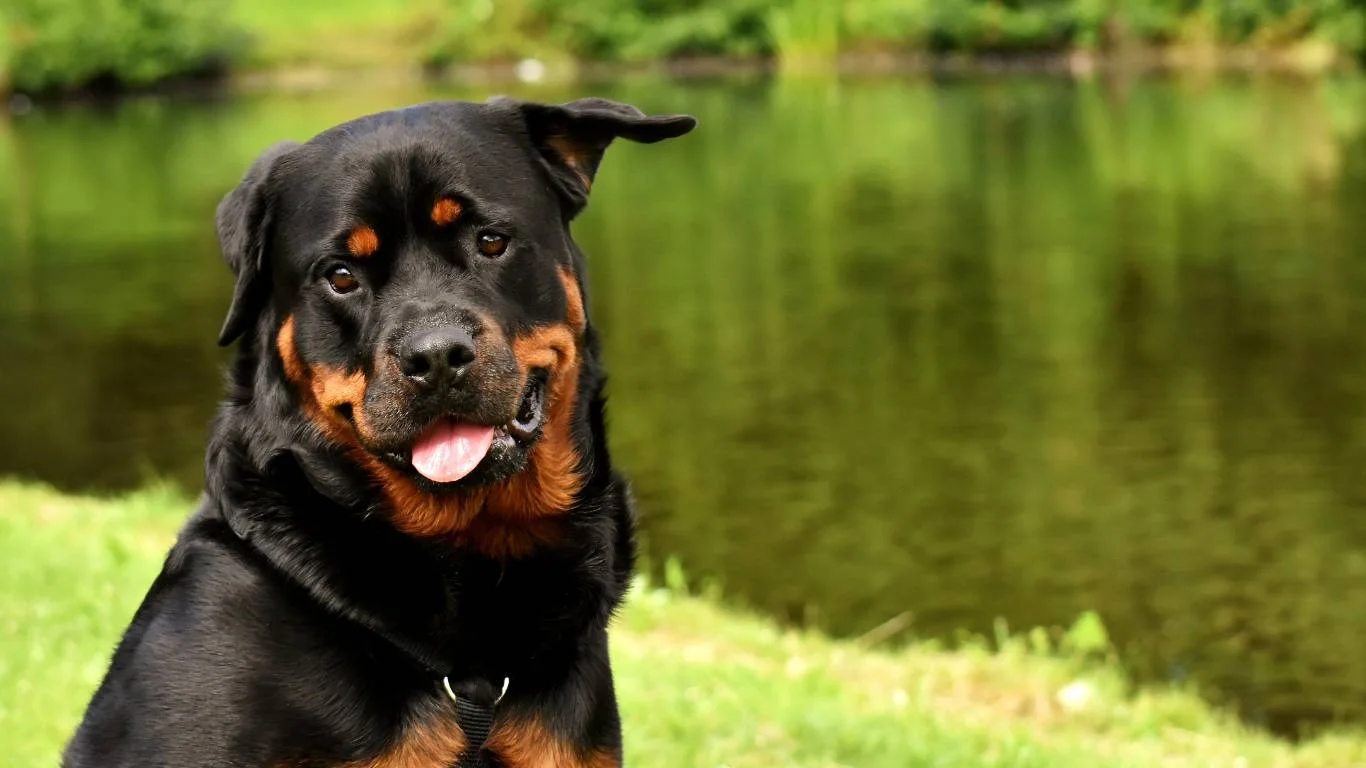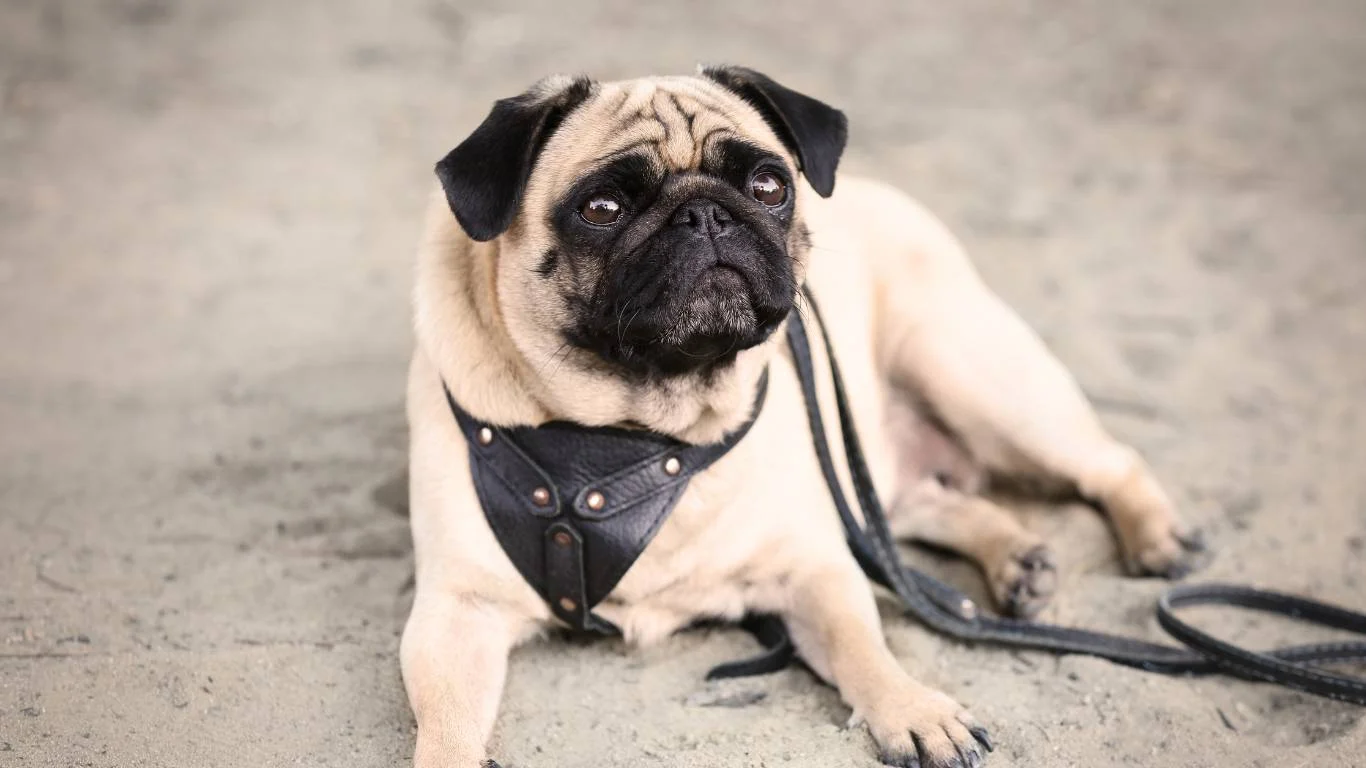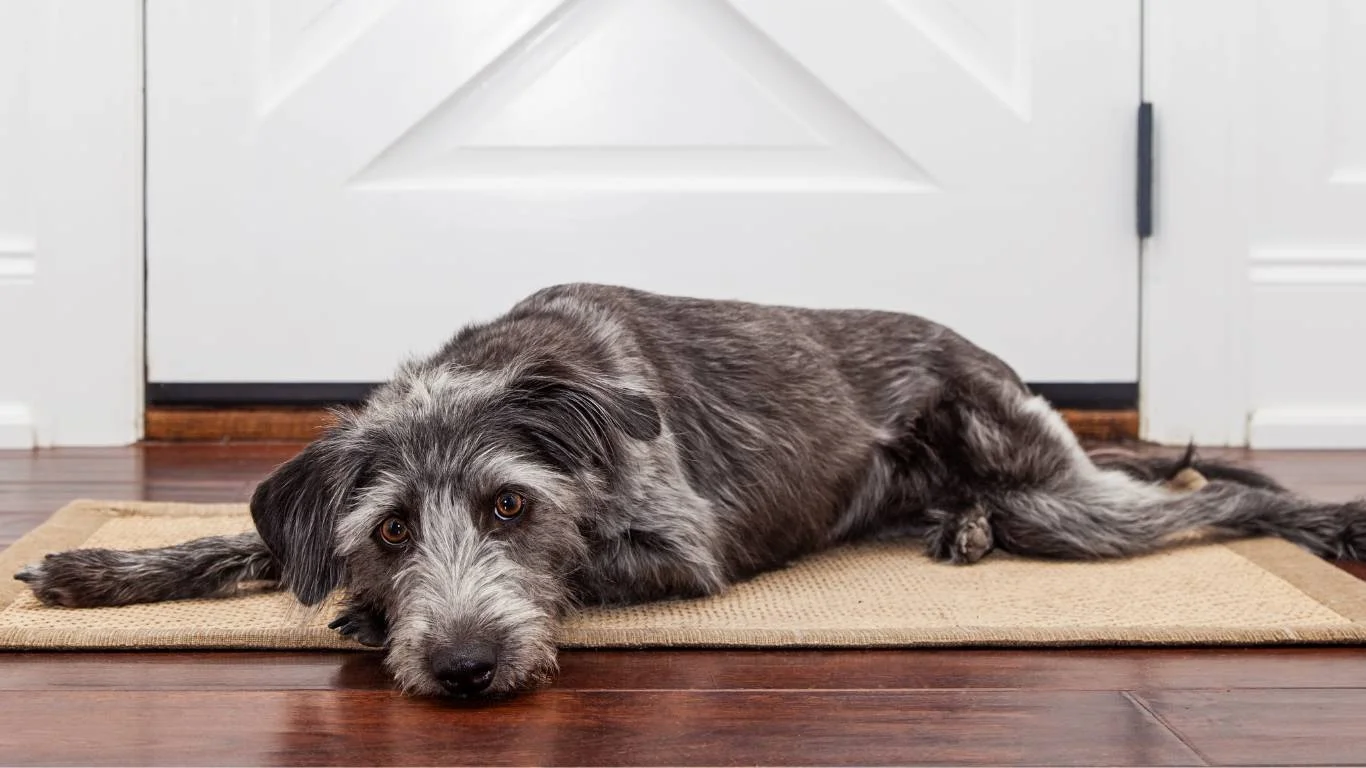How to Massage a Dog for Pain Relief: 7 Soothing Techniques
As a Veterinary Assistant with a passion for nutrition and well-being, I’ve come across various ways to support our furry friends when they’re in pain. One of the most effective, yet often overlooked, methods is massaging a dog for pain relief. Whether your dog is recovering from surgery, experiencing arthritis, or dealing with general muscle soreness, massage can provide immense benefits. In this post, I’ll walk you through how to massage a dog for pain relief and why it’s something you might want to try at home, with practical tips from my own experience.
Why Massaging Your Dog Can Help Relieve Pain

When it comes to providing pain relief for dogs, we often focus on medications or surgery. But did you know that something as simple as a massage can work wonders? Massaging a dog for pain relief can enhance blood circulation, reduce muscle tension, and even release endorphins, which are natural painkillers. Not only does it help with physical discomfort, but it also helps to calm the dog’s nervous system and can provide emotional comfort too. It’s a holistic approach that aligns with a lot of what I’ve seen help in practice.
Now, you may be wondering how exactly massage works for dogs. It’s simple – just like in humans, a gentle massage can target specific areas of tension in the body. Think of it as a way to relax tight muscles, ease joint pain, and improve overall well-being. Plus, it’s an excellent bonding activity that can strengthen your relationship with your pet. It’s a win-win situation for both you and your furry friend!
Getting Started: What You Need to Know Before Massaging Your Dog
Before diving into the hands-on techniques, there are a few things you should know to ensure your dog is comfortable and safe during the massage process. First and foremost, it’s crucial to assess your dog’s temperament and overall health. Not every dog will respond the same way to touch, especially if they’re in pain or feeling stressed. In fact, my first piece of advice is to always ensure your dog is relaxed and calm before starting the massage session. You don’t want to rush this process.
Here are a few things to consider:
- Consult your vet – If your dog is experiencing severe pain or discomfort, it’s always best to check with your vet before beginning any massage technique. They can offer specific advice on which areas to avoid or if massage is even appropriate for your dog.
- Choose a quiet, calm space – Dogs tend to respond better when they’re in a stress-free environment. Pick a spot in your home where both you and your dog feel at ease.
- Watch for signs of discomfort – It’s important to pay attention to your dog’s reactions. If they show any signs of distress, such as growling, snapping, or trying to move away, it’s a sign that something isn’t right, and you should stop immediately.
Techniques to Try: How to Massage a Dog for Pain Relief

Now that you know the basics, let’s get into the techniques! As someone who’s spent a lot of time working in the veterinary field, I can tell you that the key is to be gentle and patient. Your dog will likely enjoy the process more if you keep your movements slow, soothing, and intentional.
1. Start with Light Touch
When you first begin massaging your dog, it’s important to start with light, gentle strokes. This helps your dog become accustomed to the sensation and reassures them that they’re in a safe space. Using the palms of your hands, gently stroke your dog’s back, legs, and neck. Start at the top of the neck and move down towards the tail. As you move your hands, always maintain a consistent, gentle pressure.
2. Knead and Squeeze for Tension Relief
Once your dog has become comfortable with light strokes, you can introduce more targeted techniques like kneading. This is especially helpful for areas that are more tense or sore, such as the shoulders, neck, or hindquarters. Kneading is similar to how you would knead dough, but much gentler. Simply press your fingers into the muscle, give it a gentle squeeze, and release. This helps to alleviate tightness and improve circulation.
Another technique I recommend is circular motion. Using your fingertips, gently make small circles over the muscles. This helps with blood flow and encourages muscle relaxation.
3. Focus on the Sore Spots
In my experience, some dogs will have specific areas that are more sensitive or painful than others. If your dog is recovering from surgery or dealing with a chronic condition like arthritis, you might notice that they favor one side of their body or limp slightly. You can use the massage to target these spots specifically, applying light pressure and focusing on soothing the muscles around the joints. For example, gently massaging the hips and lower back can relieve pressure on the joints, which is especially helpful for older dogs or those with arthritis.
Always remember that if you notice any swelling or heat in a particular area, you should stop massaging that area and consult with your vet. This could be a sign of inflammation, and massage may not be the right option at that time.
4. Work on the Limbs
The limbs are another area that can benefit greatly from massage. Gently massage your dog’s legs, working from the paws up to the shoulders or hips. Be sure to knead around the joints and use circular motions to help with any stiffness or discomfort. This technique can help with mobility, which is especially important for senior dogs or dogs recovering from injuries.
It’s also worth noting that while most dogs will tolerate a massage session, some may become anxious or distracted. This is especially true for dogs that are dealing with a lot of pain or discomfort. If this is the case, try to keep the sessions short and relaxed, gradually increasing the duration as your dog becomes more comfortable.
Signs Your Dog Needs a Massage

Massage isn’t just for dogs in obvious pain; it can be beneficial for dogs who may not show clear signs of distress. But how do you know if your dog could benefit from a massage? Here are some signs to look out for:
- Difficulty walking – If your dog is having trouble walking or seems stiff, especially after activity, a massage can help loosen up tight muscles.
- Reluctance to move – If your dog is hesitating to get up or lying down more than usual, it could be a sign they’re experiencing some discomfort.
- Visible muscle tension – Look for signs of muscle tightness or soreness, especially in areas like the neck, back, or hips.
By paying attention to these signs, you can determine if your dog might benefit from a massage session.
Advanced Techniques for Massaging a Dog’s Sore Muscles

Now that we’ve covered the basics of massaging your dog for pain relief, let’s take it a step further. As a Veterinary Assistant with a focus on nutrition, I’ve seen the powerful impact of targeted massages on dogs with chronic pain or muscle stiffness. If you’ve mastered the simple strokes and kneading techniques, you might be ready to try more advanced methods to provide deeper muscle relief.
Advanced massage techniques are especially useful when you need to address persistent pain, like that seen in older dogs or dogs recovering from an injury. The goal is to work deeper into the muscle tissues, which may require a bit more pressure and precision. However, it’s important to maintain a gentle touch—no need to rush or force anything. Always keep your dog’s comfort level in mind.
1. Myofascial Release: A Deeper Approach
One of the most effective advanced techniques I’ve learned over the years is myofascial release. This technique focuses on releasing the tension in the fascia, which is the connective tissue that surrounds muscles and organs. If your dog has been suffering from tight muscles or restricted movement, myofascial release can be incredibly beneficial in easing those tight spots.
To perform myofascial release, place your fingers gently on the tight areas of your dog’s body. These are often areas like the neck, shoulders, or back. Apply mild pressure and hold for 30-60 seconds. You’ll likely feel a slight release or softening in the muscle tissue as you maintain the pressure. This process allows the fascia to stretch and relax, ultimately easing discomfort.
It’s important to note that myofascial release should always be done slowly and gently. Forcing too much pressure could cause additional discomfort or even injury. If you’re unsure whether this technique is suitable for your dog, always check with your vet first.
2. Stretching: Improve Flexibility and Mobility
Stretching is another great addition to your dog’s massage routine. It may sound a bit unusual, but gentle stretching can help to improve your dog’s flexibility and mobility, especially if they’re dealing with muscle soreness or stiffness. This technique is particularly useful for older dogs or those that are recovering from an injury or surgery.
One of the most common stretches for dogs is the “downward dog” stretch, similar to the yoga pose! Here’s how to do it:
- Gently guide your dog into a standing position.
- Slowly lift their front legs and encourage them to bend their rear legs into a low crouch.
- Hold the position for a few seconds, ensuring your dog is comfortable throughout.
During this stretch, you should notice your dog’s back and hips lengthening and opening up. You can also massage the hips and lower back as your dog stretches to maximize the benefit. However, avoid overstretching, as that can lead to injury. If your dog resists the stretch or seems uncomfortable, stop and try again another time.
3. Using Heat and Cold Therapy with Massage
Combining heat or cold therapy with your dog’s massage can add a powerful layer of relief to the process. I’ve found that a warm compress or heating pad can be especially helpful for dogs with muscle tension, while cold therapy works wonders for reducing swelling and inflammation, particularly in dogs recovering from surgery or an injury.
When incorporating heat into your massage, make sure the heat is mild and not too intense. A warm towel or heating pad placed on your dog’s sore muscles can help improve circulation and ease stiffness. After applying the heat for a few minutes, proceed with your usual massage techniques, like kneading or circular motions.
On the other hand, cold therapy is most effective for reducing inflammation. If your dog has been dealing with swelling in their joints or muscles, you can use a cold pack wrapped in a towel. Apply it to the sore area for no more than 15-20 minutes at a time. Afterward, you can follow up with a gentle massage to help soothe the area.
When to Avoid Massaging Your Dog

While massage is incredibly beneficial, it’s important to know when to hold off on giving your dog a massage. In my practice, I’ve seen many cases where certain conditions can make massaging your dog unsafe. It’s essential to be mindful of these situations to avoid causing further harm or discomfort to your pet.
1. Active Injuries or Infections
If your dog is dealing with a recent injury, infection, or open wound, it’s best to avoid massage. Pressing on injured or inflamed areas can increase the risk of further damage and delay healing. If your dog has a broken bone, muscle tear, or sprain, be sure to let the area heal before introducing massage techniques. In these cases, always consult with your vet to determine the best course of action.
2. Severe Joint Issues or Arthritis Flare-Ups
For dogs with severe joint issues or arthritis flare-ups, be extra cautious. While light massage can be helpful for dogs with arthritis, deep pressure or vigorous massage can worsen their condition. It’s a good idea to speak with your veterinarian if your dog’s arthritis is causing significant pain to ensure that massage is appropriate for their specific situation.
3. Respiratory Issues
If your dog has a respiratory issue, such as pneumonia or difficulty breathing, massage may exacerbate the problem. Avoid any deep pressure or manipulation around the chest area, as this can make breathing more difficult. Always check with your vet before attempting any massage if your dog has breathing problems or other serious health concerns.
Signs That Your Dog Enjoys the Massage

How do you know if your dog is enjoying the massage? Well, I’ve found that dogs can’t always tell us in words, but they have their own ways of showing their appreciation. Here are some signs that your dog is enjoying the massage:
- Relaxed body posture – If your dog seems to be leaning into the massage or lying down comfortably, it’s a sign they’re enjoying it.
- Soft sighs or gentle groans – These are often signs of relaxation, indicating your dog feels at ease.
- Tail wagging – If your dog’s tail starts wagging, it’s often a good indicator that they’re happy and content during the session.
- Falling asleep – Some dogs will drift off into a peaceful nap during or after a relaxing massage, a clear sign that they’ve been deeply relaxed by the session.
By paying attention to these cues, you can ensure that the massage is not only helping your dog’s pain relief but also making the experience enjoyable for them. After all, the goal is to help your furry friend feel better while bonding with them at the same time!
How Often Should You Massage Your Dog for Pain Relief?

Now that you have a solid understanding of how to massage your dog for pain relief, it’s important to know how often to incorporate these sessions into your dog’s routine. From my personal experience as a Veterinary Assistant, I’ve learned that the frequency of massage depends largely on the individual dog and their specific needs. Some dogs may benefit from daily sessions, while others might only need a massage a few times a week. Let’s dive into some guidelines on how often you should be massaging your dog to get the best results.
1. Frequency Based on Your Dog’s Health
If your dog is dealing with chronic pain, such as arthritis, or recovering from surgery, they may benefit from more frequent massages. In these cases, I recommend starting with shorter, more frequent sessions, about 5 to 10 minutes per day. Over time, you can gradually increase the duration as your dog gets more comfortable with the process.
For dogs with mild discomfort or occasional muscle soreness, massaging two to three times a week might be sufficient. This helps to keep muscles relaxed and joints limber without overdoing it. Dogs that have been relatively pain-free but are aging may benefit from one to two massage sessions each week to help maintain flexibility and mobility. It’s always best to listen to your dog’s body language and adjust the frequency accordingly.
2. Adjust Based on Your Dog’s Response
After a few sessions, you’ll start noticing how your dog responds to the massage. Some dogs will absolutely love the sessions and may even ask for more once they get used to the routine. Others might not be as enthusiastic, so it’s important to respect their boundaries and not force the massage. If your dog seems relaxed and content after each session, you can increase the frequency. However, if you notice signs of discomfort, like excessive panting, growling, or attempting to move away, it might be a sign to slow down or give them a break.
Massage Tools for Dog Pain Relief: Do You Need Them?

While hands-on massage techniques are often enough to provide relief for your dog, there are also some tools that can make the process easier and more effective. Over the years, I’ve experimented with different products, and some tools definitely have their place when it comes to enhancing the massage experience. Here are a few that I’ve found to be particularly helpful:
1. Massage Brushes and Gloves
One of the most common tools I recommend is a massage brush or grooming glove. These brushes are designed to stimulate your dog’s skin and muscles while removing loose fur. The gentle bristles can help increase blood circulation while offering a soothing massage experience. When I’ve used these on dogs with thick fur, it not only helps them relax but also works well for reducing muscle tension in their back and shoulders. It’s a great option if your dog enjoys being groomed, as they’ll feel the combined benefits of both a massage and a good brushing session.
2. Foam Rollers
If you have a larger dog or one that experiences significant muscle stiffness, a foam roller can be a great addition to your toolkit. Foam rollers can be gently rolled over your dog’s back, legs, and sides to provide deep muscle relief. While it may take a bit of practice to get the technique down, I’ve found that foam rollers can be especially useful for dogs recovering from joint injuries or for senior dogs that are more prone to stiff joints.
3. Heated Massagers
Heated massagers can provide both heat therapy and a gentle massage in one tool. These are perfect for dogs with arthritis or muscle soreness, as the warmth helps to relax tense muscles while the vibrations work to ease pain. I’ve seen some wonderful results using heated massagers on older dogs with mobility issues. The combination of heat and massage can increase blood flow to the affected areas, which is especially important for pain relief. Just be sure to use these with caution—keep the temperature moderate to avoid overheating your dog.
4. TENS Therapy (Transcutaneous Electrical Nerve Stimulation)
Some pet owners might also consider using TENS therapy units for their dogs. TENS units work by sending small electrical currents through the skin to stimulate nerves and relieve pain. While this is often used by veterinarians, it’s something you can also learn to use at home with proper training. If you’re interested in exploring this therapy, I recommend consulting with your vet to ensure it’s appropriate for your dog’s condition and to get instructions on how to use it safely.
What to Do After a Massage Session
After completing a massage session, there are a few additional things you can do to maximize the benefits for your dog. First, make sure your dog has plenty of time to rest afterward. Just like in humans, after a good massage, your dog may feel a bit tired or need to nap. Let them relax and allow their body to absorb the benefits of the massage.
1. Offer Water and a Light Walk
After a massage, it’s important to rehydrate your dog. Massage increases circulation and can sometimes lead to a buildup of metabolic waste, so offering your dog fresh water is a good idea. Some light stretching or a short walk afterward can also help maintain flexibility and prevent stiffness, but don’t overdo it. Keep the activity light and relaxed for the first hour after the massage.
2. Monitor Your Dog’s Response
After a massage, it’s always helpful to keep an eye on how your dog is feeling. Sometimes, muscle soreness or discomfort can be triggered if the massage was too intense or the dog’s body was not used to it. If your dog seems to have any unusual reactions, like limping, shivering, or signs of increased pain, it’s important to contact your vet for advice. This doesn’t always happen, but it’s best to be proactive in ensuring your dog’s comfort and safety.
3. Consistency is Key
Just like any therapeutic technique, consistency is key. Regular massages can help maintain mobility, prevent stiffness, and provide ongoing relief for conditions like arthritis. Be patient with your dog and understand that it may take time for the full benefits to show. I’ve found that making massage a regular part of my dog’s routine—just like feeding, walking, and grooming—has been one of the best ways to keep them feeling their best well into their senior years.
Disclaimer
While massage can provide significant relief for many dogs, it’s essential to note that it should never replace professional veterinary care, especially if your dog has serious health issues. Always consult your veterinarian before starting any new treatment for pain relief, including massage, particularly if your dog is dealing with a serious injury, illness, or medical condition. Some conditions may require other forms of treatment, and massage may not always be suitable. The tips and techniques shared in this article are for informational purposes only and should be used as complementary therapies alongside proper veterinary care.
If you want more information about caring for your dog, feel free to check out some great resources from trusted organizations like PetMD or The American Kennel Club. These sites offer expert advice and resources to keep your dog healthy and happy.






